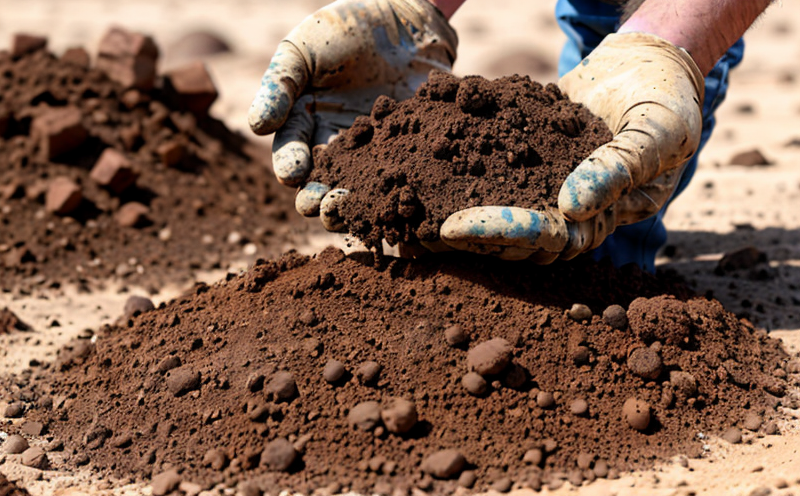ISO 17892 Part 10 Direct Shear Testing of Soils
In the mining sector, particularly in the characterization of soil and overburden materials, accurate and standardized testing is crucial for ensuring safety, efficiency, and compliance with international standards. ISO 17892 Part 10 specifies a method for determining shear strength using direct shear tests on soils. This service plays a vital role in providing reliable data that informs critical decisions related to excavation stability, foundation design, and slope stability.
The Direct Shear Test (DST) is designed to simulate the conditions under which soil may experience failure, thereby predicting its potential behavior during construction or mining operations. The test involves applying a constant shear stress to a specimen of soil until it reaches its failure point, at which time the shear strength can be determined.
The process begins with carefully selecting and preparing the soil sample according to ISO 17892 Part 10 requirements. This includes ensuring the specimen is homogeneous and free from air pockets or contaminants that could affect test results. The preparation of the sample ensures accurate testing by eliminating variables that might otherwise skew the outcome.
Once prepared, the soil is placed in a shear box, which maintains a specified normal stress to simulate field conditions. The shear box is then subjected to horizontal displacement until failure occurs. During this process, various parameters are recorded, including the applied shear stress and displacement rate. These data points form the basis for calculating the shear strength of the soil.
The results of these tests are critical in several ways. They provide a quantitative measure of the soil's resistance to lateral forces, which is essential for designing stable structures such as retaining walls or slopes. In mining operations, accurate shear strength data helps predict potential slippage or landslides, thereby enhancing site safety and reducing risks.
By adhering to ISO 17892 Part 10, laboratories ensure that their test results are consistent with international standards, fostering confidence in the reliability of the data. This consistency is particularly important for mining companies operating across different jurisdictions where compliance with local regulations is mandatory.
- International Acceptance and Recognition: The Direct Shear Test, as per ISO 17892 Part 10, enjoys widespread international recognition. Its standardization ensures that the test results can be trusted across borders, facilitating collaboration between mining firms in different regions.
- Competitive Advantage and Market Impact: Compliance with this standard provides a competitive edge by ensuring that mines meet regulatory requirements more efficiently and effectively. This compliance also enhances a company's reputation among stakeholders, including investors and clients.
Benefits
The benefits of ISO 17892 Part 10 Direct Shear Testing extend beyond mere compliance; they offer tangible advantages that contribute to operational efficiency, safety, and environmental sustainability. By providing precise shear strength data, this service enables engineers to make informed decisions about slope stability and excavation designs.
For quality managers and R&D engineers, the test results serve as a critical tool for optimizing material use and reducing costs associated with unnecessary over-engineering or underestimation of soil properties. Compliance officers can rely on these tests to ensure that their operations meet stringent safety standards without compromising operational efficiency.
The direct shear testing method is particularly advantageous in environments where the risk of landslides or slope failures is high, such as mountainous areas or regions prone to heavy rainfall. By identifying potential weaknesses early, mines can take proactive measures to mitigate risks and prevent costly accidents.
Moreover, the results from this test contribute to a more sustainable mining operation by enabling better management of resources and minimizing environmental impact. Understanding soil behavior helps in designing extraction methods that are less disruptive to local ecosystems.





